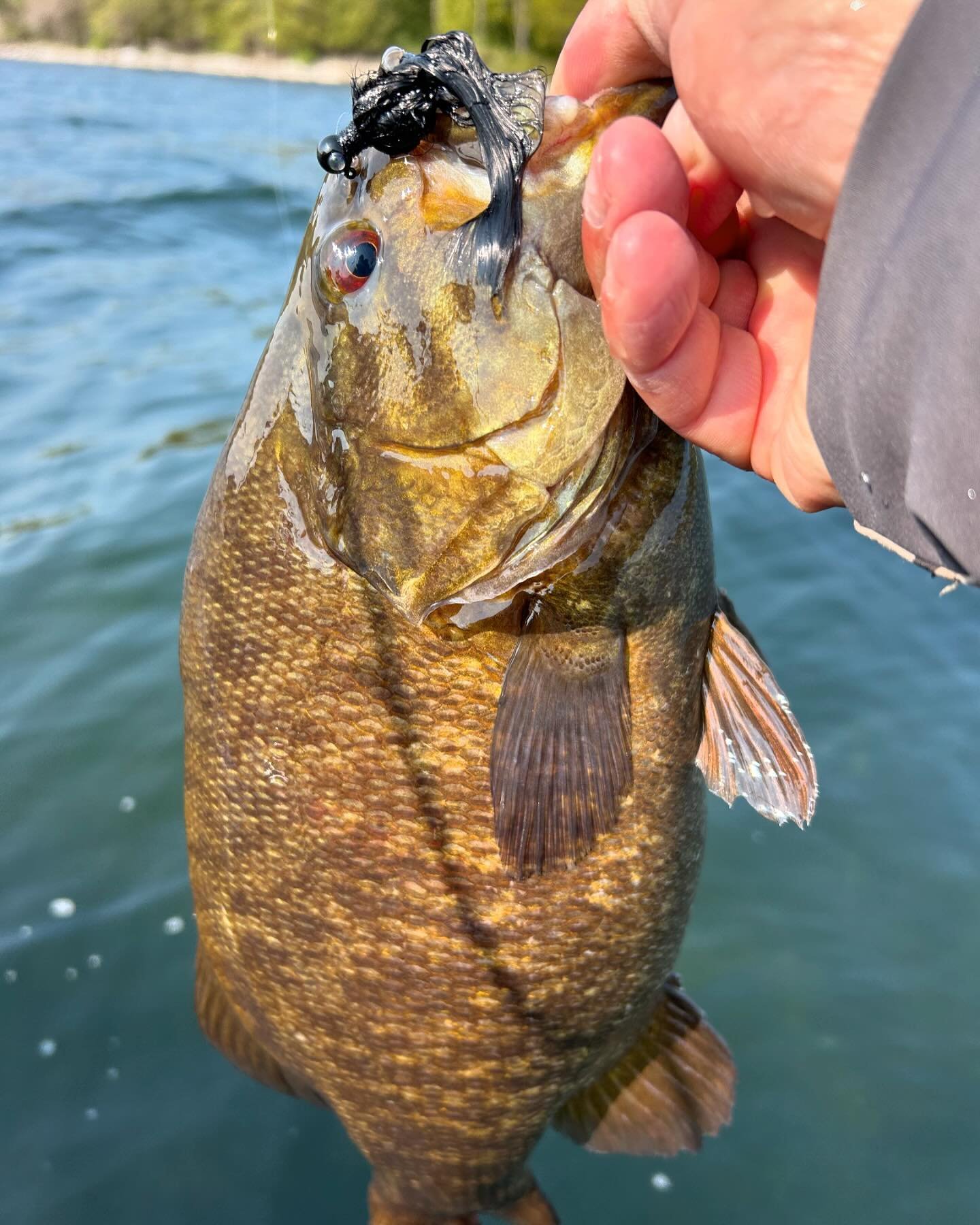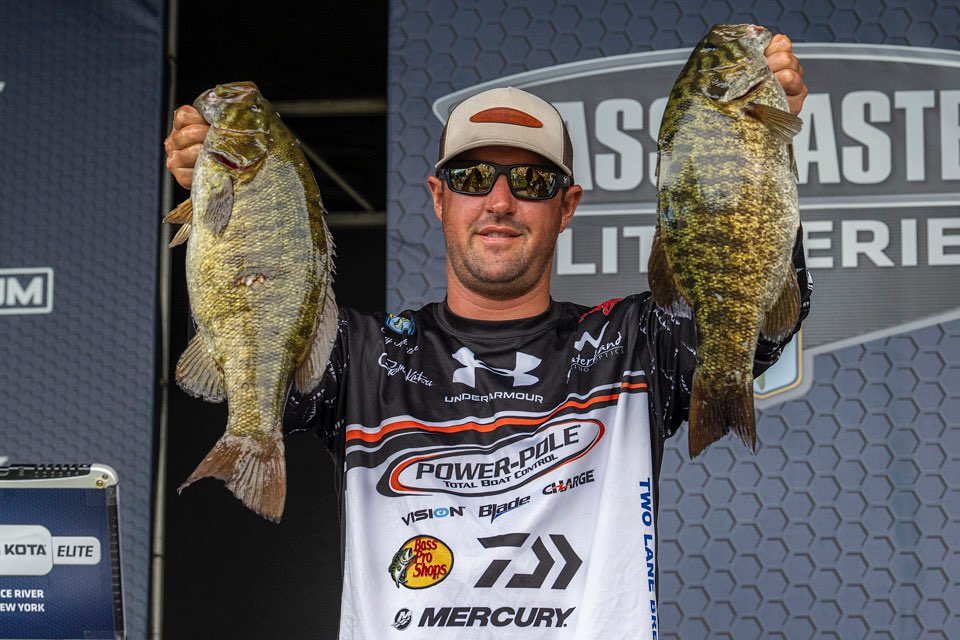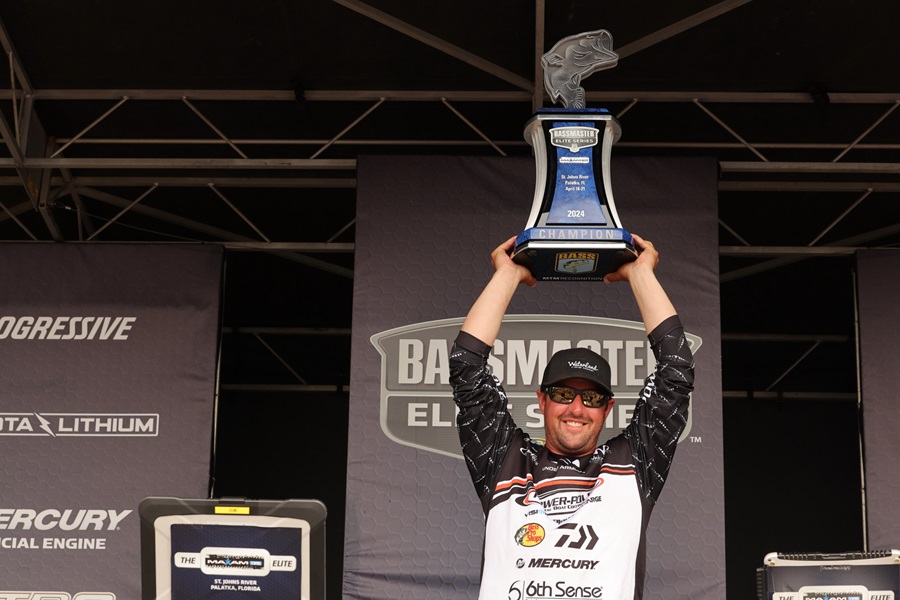
Bassmaster Elite Series pro Cory Johnston has proven that he can catch them everywhere in his professional career. He notched a win with all largemouth earlier this year on the St. John's River in Florida, but he's a smallmouth guru who seems to always be in contention for a win when he launches his boat in northern waters.
Cory and his brother Chris are smallmouth assassins. Together, they have many wins and top finishes on northern smallmouth fisheries across several tournament series, using the same tried-and-true approach.
Early Season Smallmouth

Early in the year, when the water is still cold in northern waters, Johnston still sticks to shallow water. Near his home in Ontario, Canada, the bass season isn't even open for much of the spring. Still, Johnston often fishes in American waters in prestigious events like the Sturgeon Bay Open in Wisconsin. Cory and his brother recently competed in that event and finished 4th with ten smallmouths for 54 pounds, 8 ounces, an eye-popping average fish of over 5 pounds apiece.
Most of their early-season fishing is done with a marabou hair jig, and Johnston said its effectiveness is best when the water is cold and the smallmouth bass are shallow.
"It's best when the water is still cold, in the 40s and 50s. That seems to be when they eat it the best," he said. "It originated years and years ago on Sturgeon Bay. They've smartened up to it a bit, but we still always have a few fish in our bag that came on the hair jig."
With how much they fish hair jigs, it makes sense that Cory designed their hair jig and Chris designed a rod for Daiwa specifically for casting these lightweight baits.
"I designed a new hair jig for 6th Sense that is the best I've ever had my hands on," he said. "It's not a super aggressive bite, so this jig has eyes on it to call in a few extra bites. Black is my favorite color, and 3/32-ounce is my favorite overall weight. You need the right rod to cast it out a long way."
His rod of choice is a 7-foot, 6-inch Daiwa Tatula Elite hair jig rod, and he pairs it with a Daiwa Exist 3000 reel, light braid, and fluorocarbon leader.
"The rod is super soft and casts those jigs a long way out there," he said. "It's also an excellent rod for spybaits and bends throughout, so you don't pull those little hooks out of a fish's mouth."
Typically, he's fishing the hair jig shallow with a slow and steady retrieve and looks for obvious cover. "Some of the best places are things you can see with your eyes, like isolated boulders and anywhere they can hide in shallow water," he added.
Heading to Deeper Water

After the bass spawn, Johnston goes to deeper water and looks for isolated cover and transition areas. He also switches gears and uses several techniques, including a drop-shot, Ned Rig, tube, and small swimbaits, which are all excellent for smallmouth anywhere.
"Those are the main baits that always work," he said. "We use the same rod for all of those techniques, again a rod designed by Chris. It's a 7-foot, 1-inch Ned Rig rod in the Daiwa Tatula Elite series, but it works for everything. It's probably the most versatile rod in the lineup, and we'll even use it for a drop-shot for largemouth."
Johnston says the rod is excellent for all these techniques because of the action. "It's a pretty moderate rod that bends through the whole rod, but it's still got the backbone to get a good hook in them," he said. "We use the Daiwa Exist 3000 reel for all of those baits because of how well it casts and the incredible drag. That's crucial for big smallmouth."
The Johnston brothers generally look for places where big bass live. Many of the fisheries they frequent are full of smallmouth, and the difference between 3—and 4-pound fish and 5-pounders is the key to winning events.
"We are looking for isolated rock and transitions, maybe where it goes from rock to sand," Johnston said. "Little rock patches are also good and current breaks in the rivers will hold bigger fish. A lot of it comes down to knowing the water and where big fish live; they tend to use the same areas year after year, and most of it comes down to spending time on the water to know these places. Sometimes, if you are catching only 3-pounders, you have to leave to find bigger fish if you hope to compete."
The Johnston brothers are known smallmouth specialists and are both a threat to win any event with smallies in northern waters. Their approach is relatively simple, with standard baits and gear that make it easier to land big smallmouths, and they focus on the areas that big smallmouths gravitate to.


 Advertising
Advertising